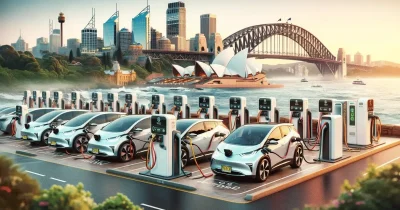In cities where health concerns, social inequalities and air pollution are harsh realities, the adoption of electric vehicles (EVs) is no longer just an environmental statement – it’s a critical solution.
Urban areas will continue to expand in 2024, as will the environmental and societal challenges. The adoption of EVs will emerge as an eco-friendly option and a necessity for sustainable urban living.
EV adoption in cities
Co-founder of MoveEV, Kate Harrison, discusses why cities should be pushing for a transition to EVs. She highlights how it could promote social change, not only to the environment, but to the gender pay gap, children’s health, and the air quality crisis in urban settings.
Harrison also calls for prioritizing EV ownership for women and ensuring they benefit proportionately from this technology to create a more equitable and sustainable future for all.
Addressing air pollution
According to the US Environmental Protection Agency (EPA), the burning of fossil fuels like gasoline and diesel is directly related to the changes in climate the planet is already experiencing.
Electricity and heat production industries produce the most emissions, followed by agriculture, transportation and industrial sectors. In fact, the transportation industry accounted for the largest portion of total US greenhouse gas emissions in 2021.
The EPA says greenhouse gas emissions from transportation alone “primarily involve fossil fuels burned for road, rail, air, and marine transportation. Almost all (95%) of the world’s transportation energy comes from petroleum-based fuels, largely gasoline and diesel.”
The air quality crisis in urban areas also has a direct impact on residents’ and commuters’ health.
A healthier choice
Harrison says in addition to improving air quality, the adoption of EVs enhances public health, especially with regard to early childhood brain development.
“Toxic air pollutants can significantly inhibit this growth during formative years. The consequences include impairing children’s cognitive capabilities in reading and math, akin to missing an entire month of elementary school,” Harrison says.
In addition to the impact it has on children, the adoption of zero-emission vehicles could prevent 90,000 premature deaths by 2050, and reduce asthma attacks for two million people.
According to the American Lung Association, this could save up to 10.7 million workdays and save up to $978 billion in public health savings.
Bridging social inequities with EVs
Other benefits which might not seem relevant to the adoption of EVs, include counteracting historical racial inequalities and closing the gender pay gap. Harrison says air pollution “is a glaring racial and social justice issue.”
She cites statistics from the National Academy of Sciences that show areas with “fewer white residents suffer almost triple the nitrogen dioxide levels compared to predominantly white zones.”
In a separate article, Harrison also points out that women, especially women of color, earn less than men on average. EVs could address this issue by helping women save up to $3,000 per year in fuel and maintenance costs.
Bigger picture
Several cities, including New York, have shown that change is possible. New York has more than 4,000 government-owned EVs. The city also electrified its take-home fleets, which helps raise awareness of the benefits of switching to electric cars.
“Seeing neighbors drive electric vehicles daily serves as a powerful endorsement, motivating nearby residents to make the switch,” Harrison says.
Other cities could follow this example by erecting public charging stations and free parking for EVs. Rebates from home charging stations could make electric vehicles more accessible, and reduced toll fees would bolster adoption on a wider scale.
About the author
Cheryl has contributed to various international publications, with a fervor for data and technology. She explores the intersection of emerging tech trends with logistics, focusing on how digital innovations are reshaping industries on a global scale. When she's not dissecting the latest developments in AI-driven innovation and digital solutions, Cheryl can be found gaming, kickboxing, or navigating the novel niches of consumer gadgetry.













